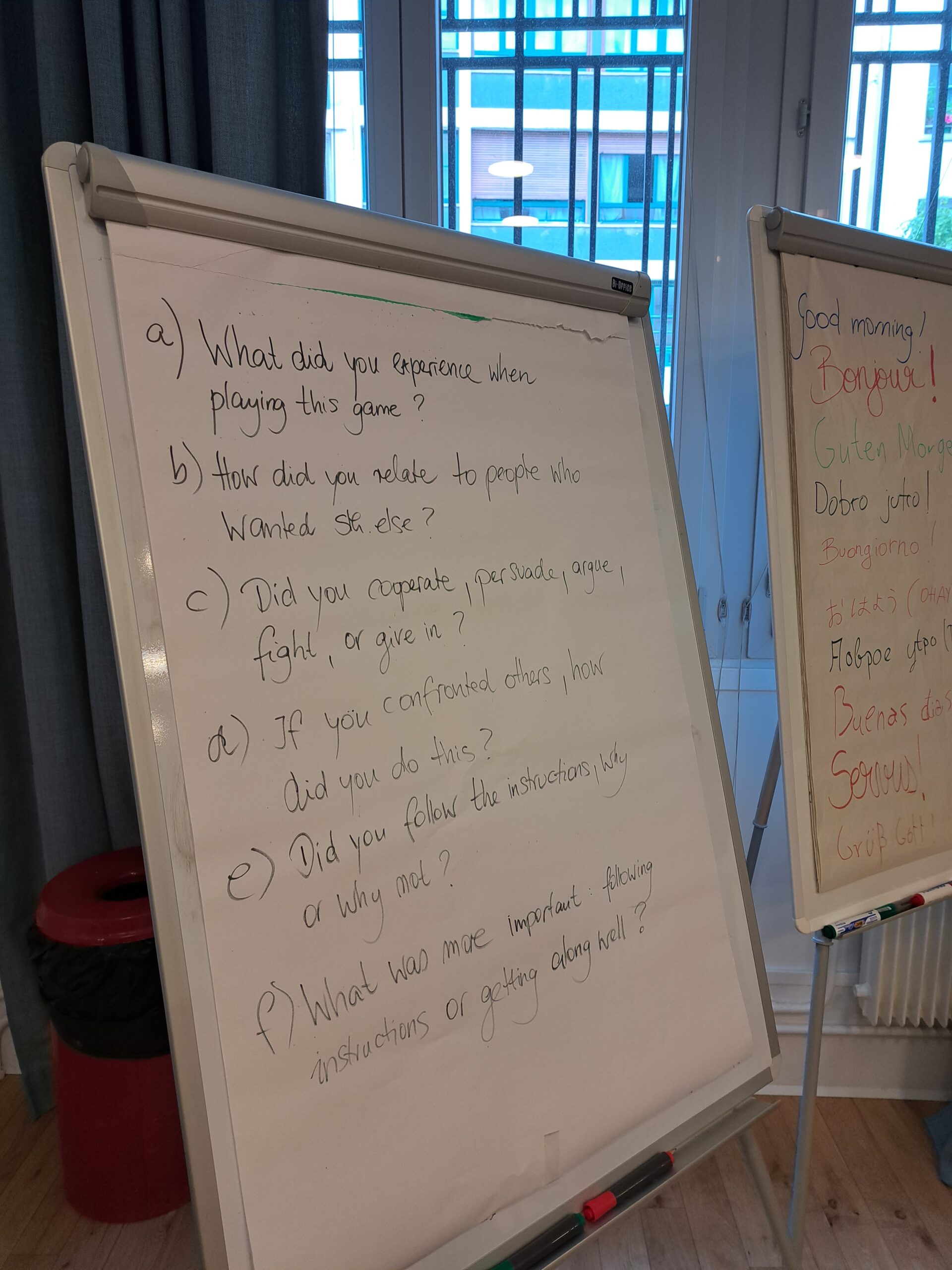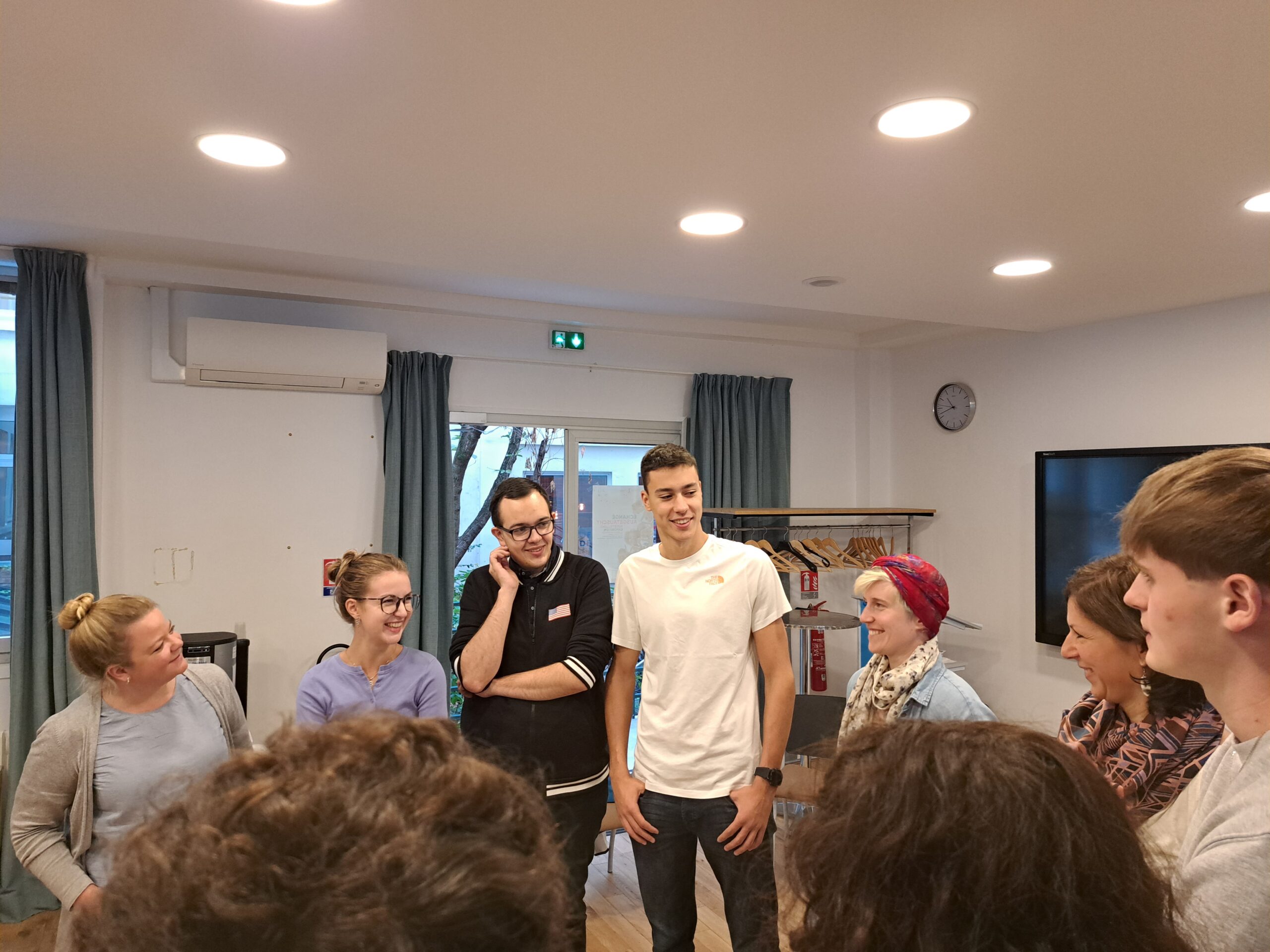3. Chairs Dilemma
Summary
This is a good exercise at the beginning of a youth exchange; it can take place after some icebreakers and getting-to-know-you activities. Participants discuss their ways of communicating during conflicts and how to deal with them as a group.
Trust in oneself and trust in the others is mandatory. People need to know each other and, feel comfortable with each other in order to avoid creating conflicts based on participants’ insecurities. Therefore, it is important to implement this method on either day 2 or 3, or to do some icebreakers and getting-to-know-you activities beforehand.
Objectives / Goals
- To work on the cohesion of the group
- To enable participants to articulate their understanding of conflict
- To develop a common definition of conflict
- To learn about different ways of resolving a conflict
Keywords
- Communication
- Team cohesion
- Conflict resolving
- Mutual understanding
Number of participants
20
Type of participants
- Age: 14y – 30y
Duration
1 hour to 1 hour and 30 minutes
Materials / preparation
- Room with enough space
- No tables
- 1 chair per participant
- 3 sheets of paper (A, B and C) each containing written instructions
Instructions
Step 1 (5 minutes): the participants sit in a circle on chairs in a room without tables.
Step 2 (2 minutes): the participants are divided into three groups (A, B, C). The facilitator hands out written instructions on a sheet of paper to each group. The facilitator asks the groups not to reveal their instructions to the others as this would defeat the purpose of the exercise. They are allowed to talk.
The instructions are:
A. Put all the chairs in a circle. You have 10 minutes to do this.
B. Put all the chairs near the door. You have 10 minutes to do this.
C. Put all the chairs near the window. You have 10 minutes to do this.
Step 3 (10 minutes): The facilitator asks the groups to start the exercise, according to their instructions. The participants are reminded to try to use various options in order to reach the goal listed in their instructions.
Step 4 (at least 45 minutes): the facilitator starts a debriefing with the group using the following questions:
A. What was your experience of this game?
B. Did you feel that the chair you were sitting on was yours, to do with as you pleased?
C. How did you relate to people who wanted something else?
D. Did you cooperate, persuade, argue, fight, or give in?
E. If you confronted others, how did you do this?
F. Did you follow the instructions? Why or why not?
G. What was more important to you: following the instructions you received or getting along well with others?
Recommendations
This method should be used on the second or third day rather than at the beginning. It is important to have enough time, as the debriefing is the most important part. The facilitator should try to get everyone to talk.
Variations
The facilitator can ask the group to follow the instructions, but to not talk while moving the chairs. When debriefing, discuss group dynamics, relating to authority, who takes the lead, who observes, who follows (e.g. “which role did each person play in this situation?”) – see Step 4.

